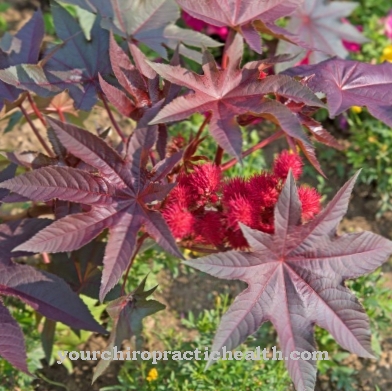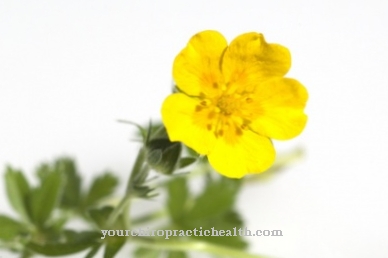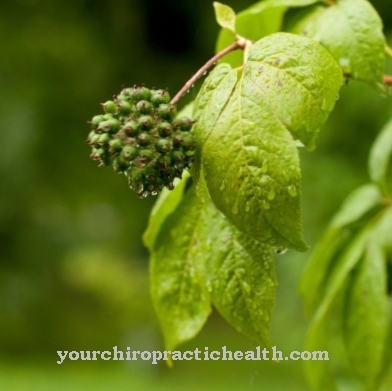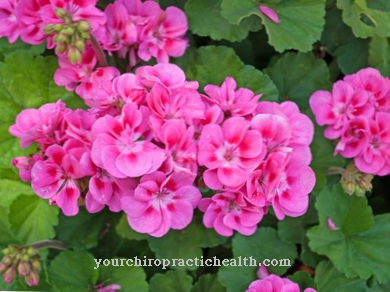The roots of the Horseradish are known to most people only for their properties in the kitchen. The plant is a medicinal plant that can be used to alleviate certain ailments without serious side effects.
Occurrence and cultivation of horseradish

Although very few people nowadays horseradish with a medicinal plant in connection, it was used by the Greeks for medicinal purposes since 1000 BC. It was only towards the end of the 16th century that the roots became more important on the menu. The wild form of horseradish can be found in Russia and Ukraine. Otherwise, the plant grows in southern Europe, where it is mainly grown in France.
When fully grown, the horseradish measures around 40 to 150 centimeters. The long root is particularly suitable for medical use. The plant also has notched leaves and white flowers. In addition, it bears fruits that are in pods. The flowering time of the horseradish is between June and July. In contrast, the roots are harvested in winter. The plant prefers a partially shaded place with a loamy, nutritious soil. Care should be taken that the plant is not confronted with waterlogging.
Effect & application
The horseradish has a high number of vitamins and other important substances, which makes it valuable for health. The ingredients include vitamin C, vitamins B1, B2 and B6, magnesium, potassium, iron, calcium and phosphorus as well as the mustard oil glycosides sinigrin and gluconasturtin. In addition, essential oils are also found in the root.
Despite the very pungent, pungent taste, the consumption of the plant helps with bacterial complaints, disorders of the gastrointestinal tract, colds, urinary stones, sinus infections, tonsillitis and impure skin. The different ingredients are responsible for the effect. Mustard oils, flavones, allicin, vitamin C, enzymes and organic sulfur compounds play a role here.
Some substances can only develop their effectiveness if they are fresh and not cooked. It is therefore advisable not to rub the root until it is actually being used. After just 15 minutes, the proportion of essential oils is only low. Accordingly, quick action is required. Rubbing the root can help with certain complaints. The pungent smell ensures that secretion of the nasal mucosa and lacrimal glands are stimulated.
This comes in handy with sinus problems. Different application methods can be used depending on the complaints present. Externally, a solution of one tablespoon of grated horseradish and one liter of water is recommended. After boiling, the solution should sit in the refrigerator overnight. Toothache and mosquito bites can be treated by applying the cut root.
Otherwise, horseradish can be integrated into salads, sauces and other dishes. To strengthen the immune system, it is advisable to eat a teaspoon of the grated plant several times a day.If the pieces are poured with wine and left to stand for a day, the horseradish wine has a menstrual and diuretic effect. In this form it can prove to be helpful for existing kidney stones.
Importance for health, treatment & prevention
The root of the horseradish is suitable for treating existing complaints. While it is very effective here, it cannot be used for preventive purposes. When consumed afterwards, horseradish has the potential to stimulate gastric juice and the production of bile.
This function is based on the pungent taste of the plant. At the same time, the plant stimulates the appetite and relaxes the smooth muscles, as studies have shown. The relaxation of the smooth muscle fibers of the organs is responsible for relieving cramps. In the case of different inflammations, the ingredients have a growth-inhibiting effect on bacteria.
As a result, colds, bronchitis and diseases of the respiratory tract subside faster without the need to use chemical agents. In addition to internal use, which can also be used for bladder infections, colds and digestive problems, the plant is also suitable for external complaints. These include, for example, wounds, but also sports injuries and back pain.
The basis of the efficiency with problems of this kind is the blood circulation-promoting effect of the root. For treatment, a poultice can be placed near the painful area. The health effects have been partially proven by scientists. Thus, horseradish is an effective alternative for various health problems. In contrast to chemical drugs, side effects rarely occur here.
For example, external use should be limited to a period of 4 to 6 weeks. Otherwise the appearance of irritated mucous membranes is possible. At the same time, long-term treatment with the root can lead to symptoms in the stomach and intestines. Compresses should initially only come into contact with the skin for 3 to 5 minutes. If another treatment is necessary on the same day, it should not last longer than 10 minutes.
Because horseradish mostly only develops its effect when it is fresh, it is necessary to use poultices, tinctures, etc. as quickly as possible, otherwise the medication can go bad. Use in children under 4 years of age is just as unsuccessful as it is in people who have stomach or intestinal ulcers or kidney problems.

















.jpg)







.jpg)


